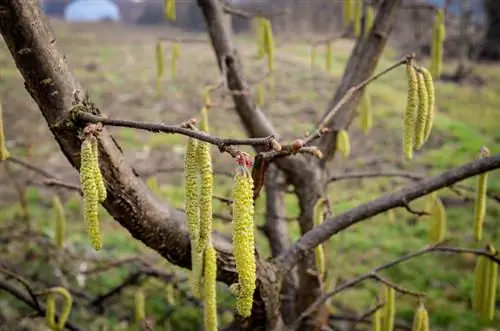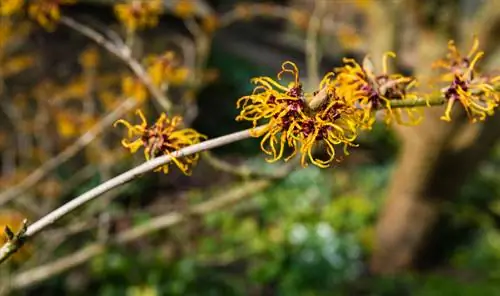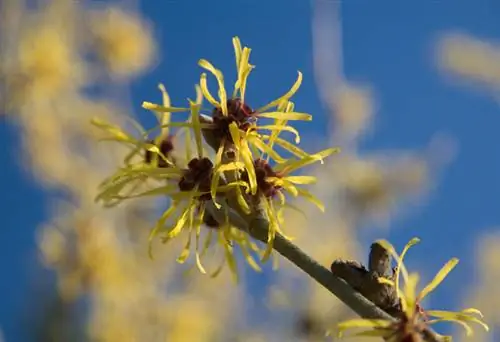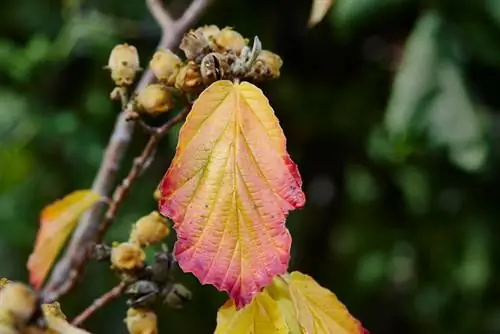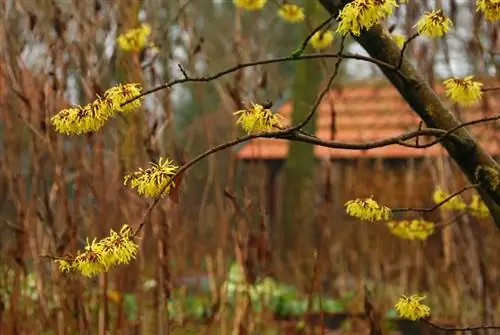- Author admin [email protected].
- Public 2023-12-16 16:46.
- Last modified 2025-01-23 11:20.
Sometimes garden plants need to be transplanted, whether the garden is being redesigned or a previously chosen location now turns out to be unsuitable. This is often possible without any problems, but unfortunately things are different with witch hazel.

When and how should a witch hazel be transplanted?
Transplanting a witch hazel should be done in autumn and is most promising with young, small plants. To make rooting easier, use mature compost or well-rotted manure. Be careful not to damage the roots as much as possible when digging.
Perhaps your witch hazel will just be bigger than you expected and planned and now there is no longer enough space. Then it is almost too late to act. Because there is a real risk that your witch hazel will not survive the move and die. It is therefore best to leave a fully grown plant where it is.
The younger and smaller the witch hazel is, the greater its chances of survival. But be prepared for your witch hazel not to bloom in the near future.
When is the best time to transplant?
If you actually need to transplant your witch hazel, do so in the fall. Dig a very large planting hole and add mature compost or well-rotted manure into it. This will make it easier for your witch hazel to root.
Dig up the witch hazel with its entire root ball if possible and place it in the planting hole. The less you damage the roots, the better. After planting, water the witch hazel well.
The most important things in brief:
- tolerates transplanting very poorly
- may not bloom for several years after transplanting
- only transplant young or very small witch hazel
- Damage roots as little as possible when digging up
- support growth with organic fertilizer
Tip
If possible, avoid transplanting your witch hazel altogether, it doesn't tolerate it well and needs a few years to recover from the move.


